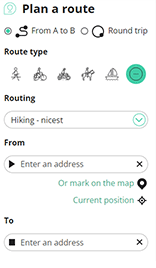The Lords of Steenhuyse have always belonged to the highest noble circles. The oldest of which a written source mentions is Amelricus in 1155.
The original Lords of Steenhuse ruled the lordship until 1443, until Jan van Steenhuse died and all the estates were inherited by his sister Maria, married to Jan van Gruuthuse. In 1556 the Gruuthuses were succeeded by the House of Egmont. This family sold the entire principality to Jean de Richardot in 1605.
After the death of Claude de Richardot's widow in 1752, the castle with the delicious goods, including the coveted princely title, was sold to the de Wolff family. 32 years later, the manor gets a new owner: Jean-Baptiste d'Hane (also the owner of the well-known patrician house, now a museum in the Veldstraat in Ghent).
After the French rulers abolished feudalism and all princely privileges, the children of Jean-Baptiste d'Hane continued to inhabit the castle: Louis - Emmanuel (until 1861), Eduard-Joseph (until 1873). The heirs of the latter d'Hane sold the estate in 1896 to Achilles de Frenne, an rentenier from Rouen in Normandy. One of the sons de Frenne will operate a flower trade in and around the castle for a while after the Second World War.
In 1978 the castle came into the hands of the Van Waeyenberge family, born Steenhuizenaars and well-known industrialists. They make the domain the beautiful pearl that it has become in 1995.
For centuries, the Lords of Steenhuyse held the exceptional title of 'prince'. Perhaps the title was acquired by Felix van Steenhuyse (1384 - 1424). The real reason is not clear, although there is no doubt that his very special relationship with the Count of Flanders is a decisive explanatory factor. After him, the other owners of the principality inherit or buy the honorary title. Not only the status of principality made the small Steenhuize a unique fiefdom. For a long time, lords and residents enjoyed two special, curious privileges in addition to the usual judicial and glorious rights and duties.
On the basis of a charter from 1348 there was exemption from taxes : no body had the right to charge taxes, taxes, tolls,... against the lordship of Steenhuize. This privilege gave rise to dozens of disputes and lawsuits.
And for a certain period there was a right of acquittal: in the territory of Steenhuize no one could be prosecuted or arrested, except by the local lord or his court servants. The archives (and the popular tradition) tell several examples of officers from the Land of Aalst or elsewhere, who themselves ended up in the prison of Steenhuize because they had violated this right. The principality became a refuge for many people "who had something on their minds" from all over the world. This special situation lasted until 1460, when Lodewijk van Gruuthuse, Lord of Steenhuyse, threw all exiles and marshes out of his domain. "Since then, serious people have been living at Steenhuize!" claims former mayor and Steenhuizener Marcel Van Daele). The original 'house' of the Lords of Steenhuyse was built in a swamp opposite the place where the castle would later rise. It must have been a typical mote, with a surrounding rampart and watering and a fence of pointed wooden poles.
As the attack techniques of the enemies improved and the need for a more efficient defense grew, a fortress of stone was erected on the site of the current castle. No images of this primordial castle have survived. During restoration work in the eighties, foundations were uncovered. The old fortress was razed to the ground at the beginning of the turbulent seventeenth century.
From 1626, Jeanne de Richardot began the construction of a modern castle, which undoubtedly looked a lot more playful and airy than the previous one, even though it initially remained a defensive building.
(The princess de Richardot usually stayed in her castle in Lembeek and only appeared sporadically in Steenhuize). Antonius Sanderus shows the building in his 'Flandria Illustrata' and clearly shows the irregular façade layout: the façade tower and the baroque porch are not neatly in the middle.
Each corner is adorned by a round turret, which partly serves as a watchtower and partly fulfills the function of a canopy. From each tower there are roof slopes, which merge into a sphere, with the emblem of the Richardots on top.
Around the brick building, typical of 17th century architecture in Flanders, a double moat winds, with agricultural plots on the strip between the two water surfaces.
The shape and size of the building has changed little since then. Although it was destroyed more than once by fire or war, it was always restored.
Even the view hardly changed : the battlements disappeared and the round turrets were replaced by octagonal ones.
It was not until the twentieth century that the decline set in. Under the de Frenne family, most of the water wall was dumped. The buildings became dazed.
The saving angels were called Camille and - especially - Piet Van Waeyenberge. On their initiative, the building was transformed into a meeting and seminar centre for the business world, managed by Ecoval SA.
The extensive restoration works were largely led by artist Maurits Van Saene, who was awarded the coveted Europa Nostra Award in 1991.
Steenhuize-Wijnhuize
Discover the most beautiful and popular trails in the area, carefully bundled into appropriate selections.
Source: Spotter2
Copyright: Creative Commons 4.0
Discover the most beautiful and popular attractions in the area, carefully bundled in appropriate selections.
Source: Spotter2
Copyright: Creative Commons 4.0
With RouteYou, it's easy to create your own customised maps. Simply plot your route, add waypoints or nodes, add places of interest and places to eat and drink, and then easily share it with your family and friends.
Route planner

<iframe src="https://plugin.routeyou.com/poiviewer/free/?language=en&params.poi.id=1270058" width="100%" height="600" frameborder="0" allowfullscreen></iframe>
Try this feature for free with a RouteYou Plus trial subscription.
If you already have such an account, then log in now.
© 2006-2024 RouteYou - www.routeyou.com